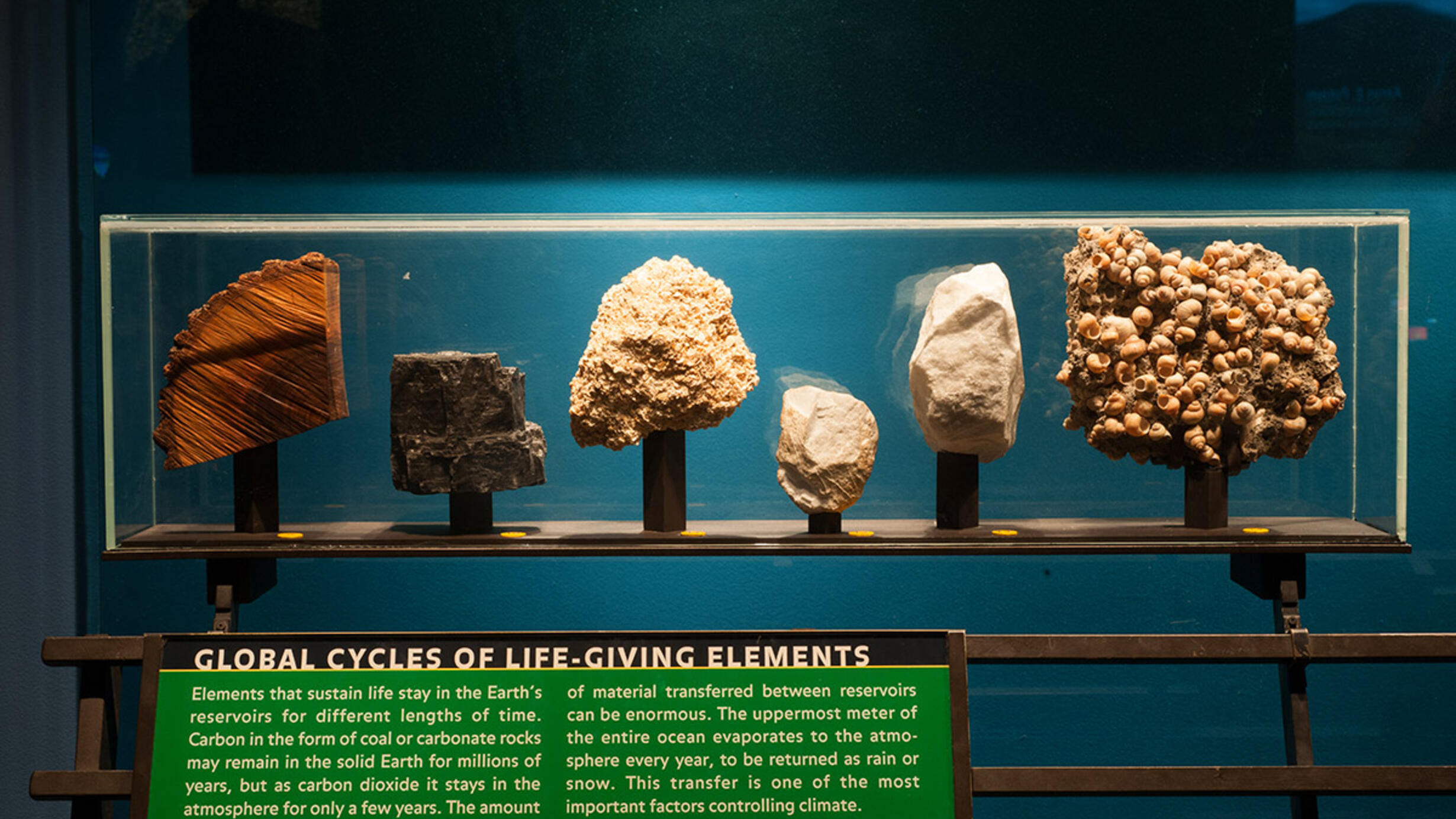Global cycles of life-giving elements
Part of Hall of Planet Earth.
Part of Hall of Planet Earth.
 AMNH/R.Mickens
AMNH/R.Mickens Elements that sustain life stay in the Earth’s reservoirs for different lengths of time. Carbon in the form of coal or carbonate rocks may remain in the solid Earth for millions of years, but as carbon dioxide it stays in the atmosphere for only a few years. The amount of material transferred between reservoirs can be enormous. The uppermost meter of the entire ocean evaporates to the atmosphere every year, to be returned as rain or snow. This transfer is one of the most important factors controlling climate.